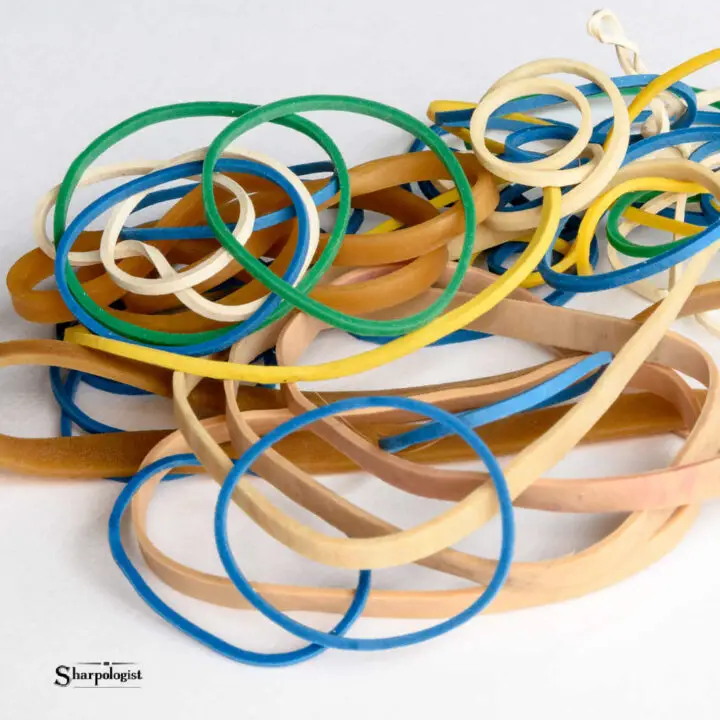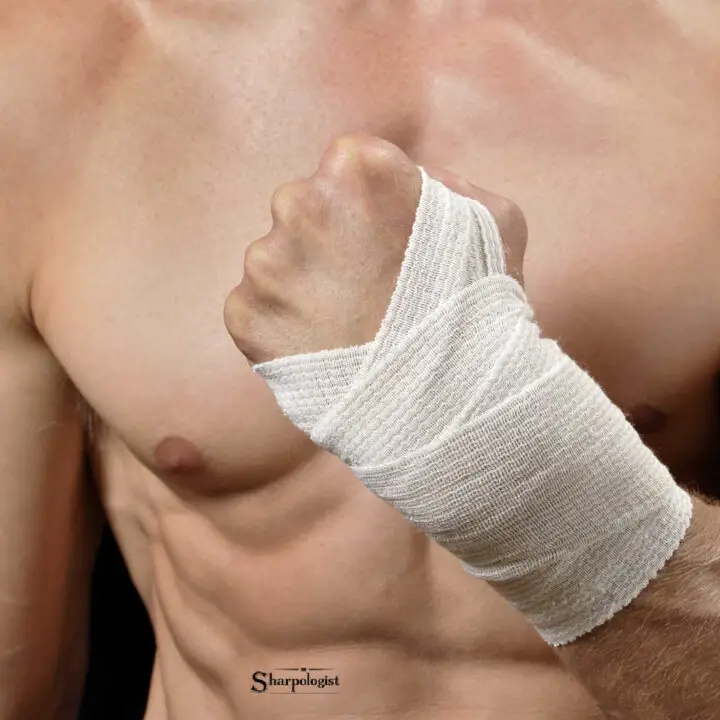
I see one lapse in shave technique a lot. I see it in shave videos, when I’m coaching a new shaver, and I’m even guilty of doing it myself on occasion. “It” is not locking the wrist when you take a shaving stroke. Here’s a way to remind yourself to lock the wrist while you’re shaving with a non-pivoting razor, and why it’s important.
Why Locking The Wrist Is Important
Consider the pendulum:

The pendulum’s bob is parallel to the horizontal plane for a very short distance.
The example is over-dramatized as it relates to shaving but the point is if your wrist is unlocked it essentially becomes the pivot in a pendulum; if the razor is the pendulum’s bob then it is parallel to the skin for only a short distance.
When you use a non-pivoting shaving razor you must maintain the angle of the blade against the skin. Locking the wrist allows the razor to move over the surface with much greater consistency, for a longer shave stroke.
Front-facing pivoted razors are not as susceptible to the pendulum effect, but only up to the travel of the razor’s pivot. So locking the wrist can be beneficial here, too.
You will notice a difference in the consistency of your shave if you lock the wrist and use your arm as a unit while holding the razor.
How To Remind Yourself To Lock The Wrist
One way I remind myself to lock the wrist is to put something on my wrist to “notice” what I’m doing. A simple, cheap method I have used is to put a rubber band on my wrist.

I find a rubber band with a relatively wide band width and a diameter small enough to make a snug fit (but not too tight) is good for making me aware that something is on my wrist, which in-turn reminds me to lock the wrist.
Immobilizing The Wrist
[Note: links are affiliate.]
It might be over-kill, but there are ways of immobilizing the wrist if you really want to. A wrist splint or brace is the way to go here. A quick search on Amazon will show a number of solutions. However for this purpose a smaller, less expensive brace should be fine.
And it’s quite likely you can find something in a local megamart or drug store such as Walmart, Target, Walgreens, and CVS.
An alternative is to wrap the wrist with a compression bandage (“Ace Wrap” or equivalent. Again you should be able to readily find this locally). One method to wrap the wrist:
Step 1: Wash your hand thoroughly and make sure that you have a clean bandage.
Step 2: Keep your hand and wrist straight. Start wrapping the bandage from below the wrist (this might be a little tricky if you’re trying to wrap your wrist yourself– you may need to use your own body, a table or a wall to hold the bandage in place and keep wrap taut as you begin to roll). Do not bend your hand forward or back as you wrap: the goal is to keep your wrist straight.
Step 3: Go over the thumb and back down again. Ideally, the wrist should be wrapped all the way up to the point where your fingers meet your hand. If you have someone to assist you, ask them to wrap the bottom of the wrist first and then continue wrapping in a figure 8 pattern to stabilize the wrist properly.
Step 4: Do not wrap the wrist too loosely as it does not support the joint. And if you wrap the bandage too tightly it might obstruct the flow of blood (and oxygen) to the area.
Step 5: Secure the last bit of the bandage with a Velcro tape or pin.

Conclusion
OK, I admit this might seem like over-kill or maybe even a little dumb. But if you are having trouble getting a consistently good shave with your razor, even if you are using “premium” wet shaving products, it might be subtle deficiencies in your technique that is to blame. Locking the wrist is one such subtle aspect of using a razor properly.
Give it a try and leave a comment below with your observations!

Makes perfect sense. Lock down or constantly be changing your angle of attack.
The importance of locking the wrist is an outstanding reminder. Thank you.
Several of my aggressive razors frequently bite me: the 1936 Gillette Aristocrat and the Schick Injector Type E from the same era.
I think it may have been my “flexible wrist” technique that caused or at least contributed to the problem. I will be testing that theory soon
Comments are closed.